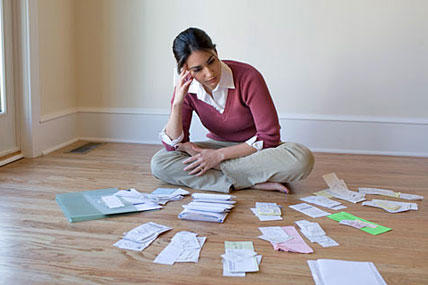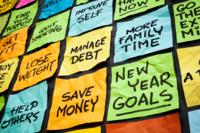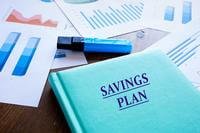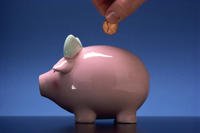The first step to getting your finances on track is to know where your money is going. But that isn’t always obvious: You may have a good handle on your monthly bills, but what about your daily expenses? You may be surprised by how much money you spend on small items -- like food and transportation -- when you add up your out-of-pocket costs.
It’s easy to track your spending if you focus on a short timeframe. When you see all of your expenses laid out, you may be able to identify some simple changes that could make a big difference in your financial situation -- helping you stretch your paycheck or build your savings. The Track Your Spending Worksheet can help you get started. If you’re married, both you and your spouse should track your spending for a week, which can be an eye-opening experience.
This Action Plan requires five steps:
- List your regular monthly bills, such as your mortgage or rent, car loan, utilities, phone, Internet service, cable TV, credit-card bills (and any interest you pay, too), insurance premiums and child-care expenses. See the worksheet for ideas.
- Track your out-of-pocket spending for a week. Keep track of all the money you spend for a week on groceries, gas, meals, clothes, entertainment, personal items, and even sodas and snacks, which can all add up. Keep a small notebook with you, use this expense chart or just collect the receipts during the day and add them to the list in the evening. Keep track of all expenses for the week, whether you pay for them in cash or use a debit card, credit card or check.
- Review the numbers. Now that you can see how you’ve spent your money, look for ways to save. Some strategies may be simple, like cutting back on meals out or using in-network ATMs to avoid fees. You may also want to make bigger changes that can save more money, such as cutting back on your cell phone package or dropping cable TV.
- Review your big-ticket expenses. After you’ve reviewed your regular expenses, it can also help to review your big-ticket bills for the past year -- the special expenses such as home improvements, car repairs, travel, education, furniture and electronics. These bills don’t crop up every month but can make a big difference in your finances -- and can land you in debt if you aren’t prepared. Go through your credit card statements, bank records and receipts to list the cost of these items. If you don’t have good records of these expenses from the past year, start keeping a log of them from this point forward. Looking at these irregular costs will help you plan better for emergencies and other unexpected bills.
- Create a plan. Review all of your expenses for ways to cut back, then decide what to do with the extra money. Set specific goals, such as building an emergency fund, paying off your credit-card bills, or increasing your retirement savings. See Start a Spending Plan for the next steps.
Tracking your spending can help you take control of your checking account. See our Manage Your Checking Account Action Plan to help you make sure you have your checking account in order.









